Kriegsmarine White Admiral Rank Visor Cap
SKU: 21.GOR.01.01.01.01.002
Estimated market value:
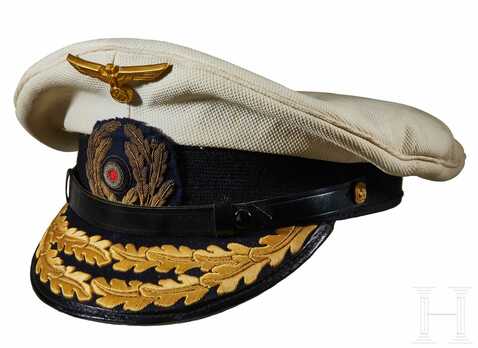
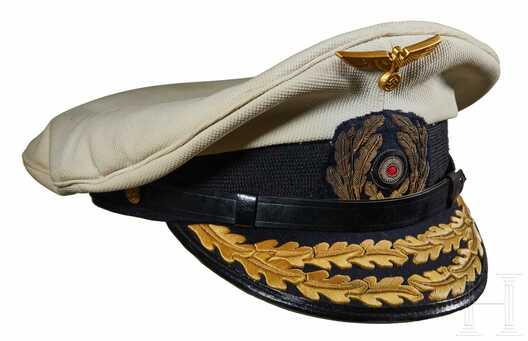
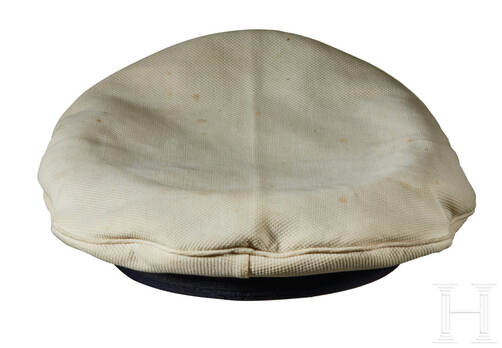
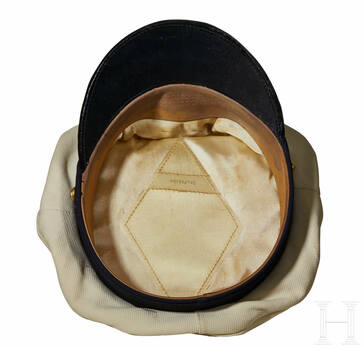
Estimated market value:
Attributes
History
The headgear and uniforms worn by members of the Kriegsmarine were based upon the designs utilized by the Kaiserliche Marine and the Reichsmarine. The official regulations governing the uniforms of the Reichsmarine were issued on April 5, 1921, and they were embraced, with a few alterations, as the Kriegsmarine uniforms in 1935. New guidelines concerning rank insignia were issued in 1936, and in 1938, the traditional saucer form (Tellerform) of the visor cap was changed to a new saddle form (Sattelform).
While the form of the Visor Cap was officially changed from saucer to saddle in 1935, the saucer form of the caps that were already issued could be worn during the Second World War as a result of permissible wear-out periods.
This Visor Cap was worn as part of the blue uniform and summer uniform by Officers and Non-Commissioned Officers of the Kriegsmarine, it was not worn by enlisted personnel.
The cap is composed of several main elements, including the cloth top cover and piping, the cap band with piping, the visor with associated visor trim, and the chin strap/cord. In the cap interior, the main elements include the top metal stiffener (removable), the inside lining, the diamond-shaped moisture shield (not always present), the sweat band, and the manufacturer's logo and associated information. Each cap was also adorned with an oak leaf wreath and cockade in the centre of the cap band, and a national emblem above the cap band and along the front seam of the cap.
There are two main models of the visor cap, they deviate in the manner through which the top is attached. The 1935 model of the caps features a non-removable navy-blue top cover. In 1938, the second cap model was made available, and it features a removable navy blue or white top cover and an additional a layer of white gauze on top of the cloth lining. The blue top caps worn by Officers were primarily composed of wool doeskin but were also made with moleskin. The caps worn by Non-Commissioned Officers were composed of Feldwebeltuch. The caps with a white top cover were made from high-quality cotton fabrics, such as moleskin. They were primarily meant for wear in summer months, which ranged from April 20th to September 20th, and in tropical regions, but were also permitted for wear all year by U-Boat Commanders.
The cap band is composed of hardened, ribbed black mohair, which was hardened through the addition of other materials, such as plastic or pasteboard.
The 1935 model caps feature visors composed of black lacquered “Vulkanfiber” that are trimmed in leather piqué. There are also examples of caps with visors made from natural leather and a leather piqué trim. In 1936, a black or navy-blue cloth covering was added to the visor obverse on all Officer Caps. As well, from 1936 onwards all visors were decorated with additional features that reflected the wearer’s rank group, including cords of oak leaves or scalloping. These features were initially made of bullion wire or celleon, and later from stamped metal that was made to look like embroidery. The caps of Administrative Officials, Non-Commissioned Officers, and Officer Candidates were exempt from the 1936 changes, and their cap visors remained black and lacked the cloth covering and rank features.
The visor caps of Junior Officers, with the rank of Ensign (Leutnant zur See) through to Lieutenant (Kapitänleutnant) and Music Officer (Stabsmusikmeister) feature a single row of gold-coloured scalloping along the visor’s border.
The visor caps of Senior Officers below the rank of Admiral, including Stabsoffiziere, Musikinspizienten, and Korvettenkapitän through to Kommodore, feature a single row of interlocking gold-coloured oak leaves, embroidered in bullion or celleon, along with the visor’s border.
The visor caps of Admirals feature two rows of interlocking gold-coloured oak leaves, embroidered in bullion or celleon, which originate from the same stem and meet along the centre along the visor’s border.
The chin strap for Officers and Senior Non-Commissioned Officers is composed of black patent, lacquered, simulated, or matte leather.
The inside lining of the caps is generally made from rayon. The rayon lining of blue top caps ranges dark blue to light blue, and for white top caps, the rayon lining is gold or white.
The sweatband is predominantly composed of genuine leather and was rarely made from artificial leather. The most frequently encountered sweatband colours are tan, dark and reddish brown, and gray.
The moisture shield is made of transparent celluloid.
While Kriegsmarine caps generally lack manufacturer logos, when present they were placed on or under the moisture shield; one well-known manufacturer is Steinmetz & Hehl, Hamburg. The logo tended to be accompanied by the year of production and the size of the cap.
On all Officer visor caps, the insignia are gold-coloured and may be composed of stamped metal made to look like embroidery, hand-embroidered bullion wire, or machine woven and embroidered celleon, cotton, or artificial silk thread. The insignia were silver-coloured for Administrative Officials with the rank of Officer. Generally, the insignia worn on the visor caps of Officers were of a higher quality of manufacture and material than those worn on the caps of Non-Commissioned Officers. Also, a silvered cross could be attached to the centre of the cockade to indicate status as a reserve Administrative Official or Officer from March 1935 until early 1936.
Variations of the standard Visor Cap, worn by Officers and Non-Commissioned Officers, were worn by Kriegsmarine personnel of various naval careers.
For Administrative Officials (Wehrmachtbeamte der Marine), the caps have a twisted, silver-coloured chin cord, made from silver wire or aluminum. The caps of Officials who held a rank up to Kapitän zur See feature silver wire or aluminum cords, while those with the rank of Admiral feature gold-coloured cords.
The Marine Clergy (Marineseelsorge) uniforms regulations were first issued in October 1934, but these regulations were not made mandatory until April 15, 1938. These caps are almost identical to those worn by Administrative Officials but are different in that they have an embroidered silver cross, known as the Christus Kreuz, added to the cap insignia. Until 1939, this silver cross was located within the oak leaf wreath, but afterward it was placed above the oak leaf wreath.
The Marine Post personnel wore the standard cap with lemon yellow piping.
From 1921 until December 22, 1934, Naval Pilots (Marinelotsen) were allowed to wear the standard cap with additional insignia, including the band insignia and the Lotsenflagge. Following 1934, Naval Pilots were classified as Officials.
These variations to the standard Visor Cap may be associated with changes to the price.
The Visor Cap may also be known as the Peaked Cap or Service Cap.

Versions
$7,500 USD
This particular example was owned by Admiral Kurt Fricke.
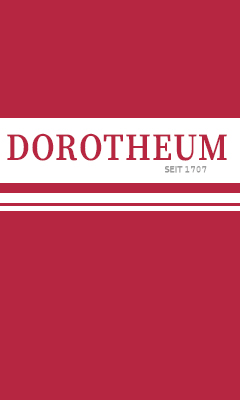
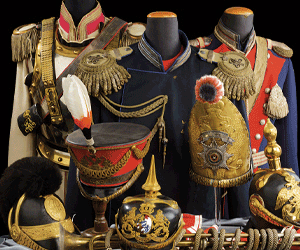
Comments
Sign in to comment and reply.


Scroll Top